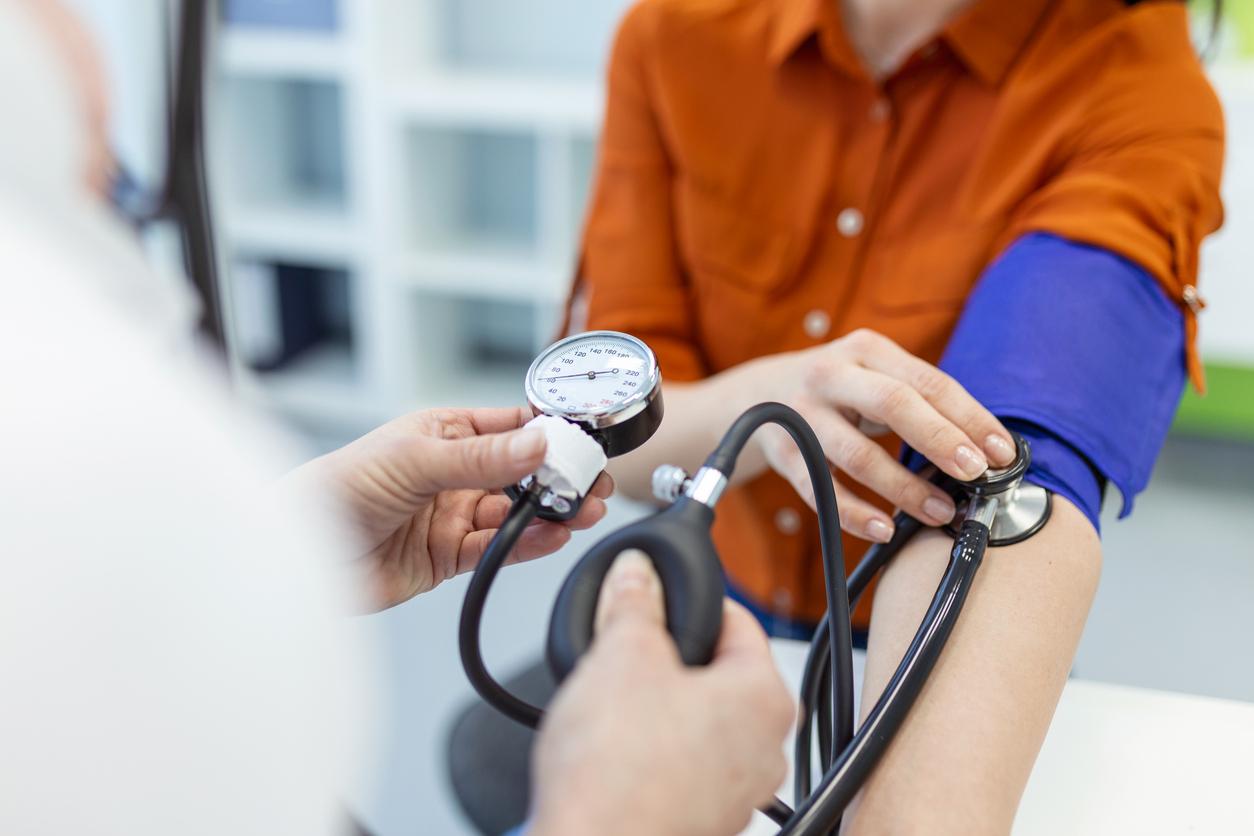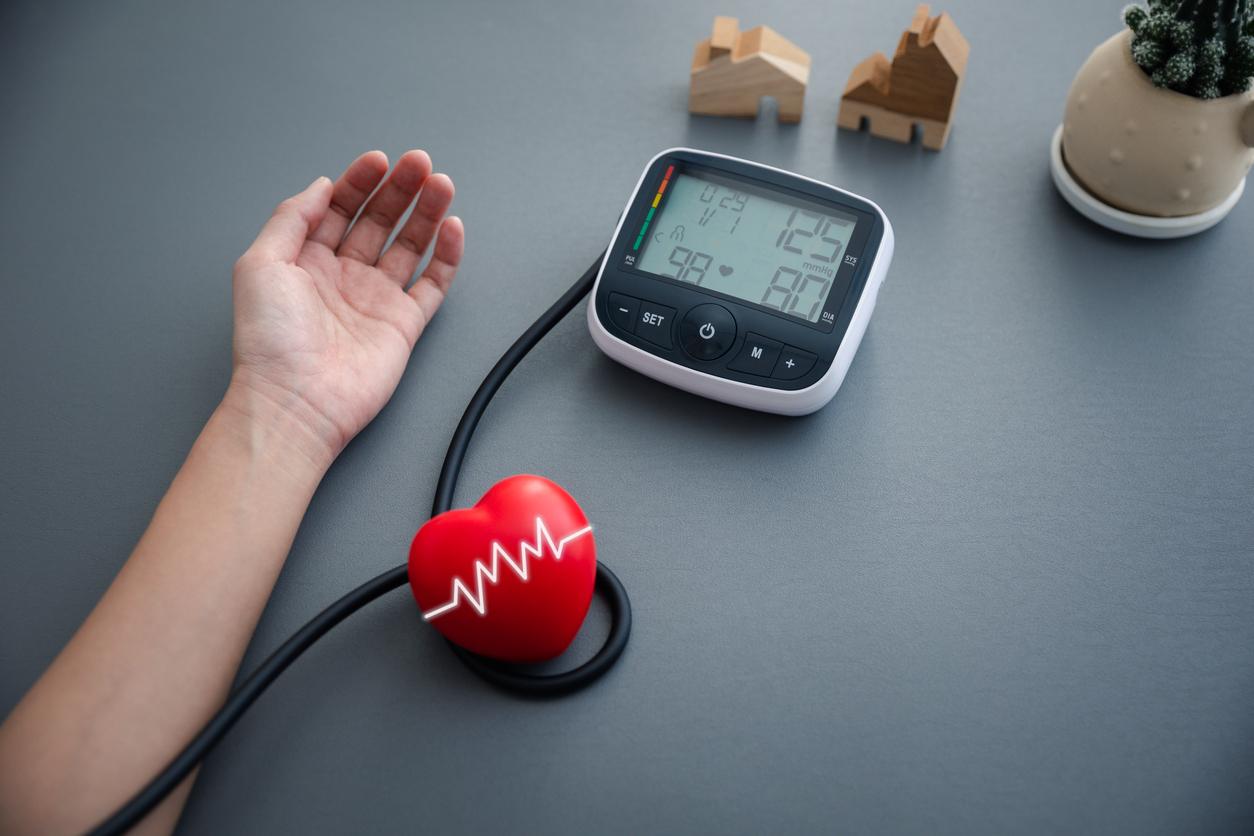The European Society of Cardiology (ESC) took advantage of its annual congress to present the new classification for blood pressure.

- The ESC took advantage of its congress to present a new classification for blood pressure.
- Hypertension is always diagnosed when blood pressure is greater than or equal to 140/90 mmHg.
- But if the patient has a systolic pressure between 120 and 139 mmHg and a diastolic pressure between 70 and 89 mmHg, he is diagnosed with high blood pressure.
The ESC Congress, held in London from 30 August to 2 September 2024, was an opportunity for healthcare professionals to learn about the new blood pressure classification. The latter is intended to be more in line with the risks incurred by patients.
Blood pressure: new measurements to know
No change regarding high blood pressure. A patient with a blood pressure greater than or equal to 140/90 mmHg during consultation will be diagnosed as hypertensive. On the other hand, the new classification specifies the notion of high blood pressure. It is diagnosed when the systolic measurement is between 120 and 139 mmHg and the diastolic is between 70 and 89 mmHg. A non-high blood pressure is below 120/70 mmHg.
Why did cardiologists revise the classification of blood pressure? “It starts from a known observation: the risk attributable to increased blood pressure begins very early, even below 120 mmHg. These recommendations have reappropriated this message.”explained Pr Atul Pathak in an interview given to Cardio-online.
The aim of this new classification is to improve the management and identification of people at risk. While all hypertensive patients can benefit from treatment, the recommendations provide personalized instructions for patients with high BP. Medication can be considered if they are at risk (moderate or severe chronic renal failure, proven cardiovascular disease, diabetes, etc.) or if their blood pressure remains above 130/80 mmHg despite adopting a better lifestyle (diet, exercise, etc.).
Furthermore, patients receiving antihypertensive medications have a lowering goal. Systolic blood pressure should be 120 mm Hg to 129 mm Hg with treatment.
HTA: hygiene and dietary guidelines also revised
THE new recommendations also looked at the lifestyle rules given to patients and provided clarifications. The fight against a sedentary lifestyle remains an important element of cardiovascular health. It is still recommended to do at least 150 minutes of moderate physical activity per week (aquagym, downhill skiing, frisbee, sailing, badminton, golf). But if you can’t find 2.5 hours in your week, you can opt for 75 minutes of vigorous physical activity (jogging, mountain biking, skipping, football, basketball, etc.) spread over three days in addition to moderate or low intensity activity (gardening, pétanque, housework, walking, bowling, etc.).
However, be careful in cases of uncontrolled hypertension at rest, exercise should be practiced with caution, experts remind.
Cardiologists also confirm that the DASH and Mediterranean diets are recommended for the heart. In addition, free sugars, especially sugary drinks, should not constitute more than 10% of energy intake. And, it is preferable not to drink them “at a young age”.
It is now also recommended for people suffering from high blood pressure. without moderate or advanced chronic kidney disease to increase their potassium intake, either through salt substitutes or diets rich in fruits and vegetables.

















